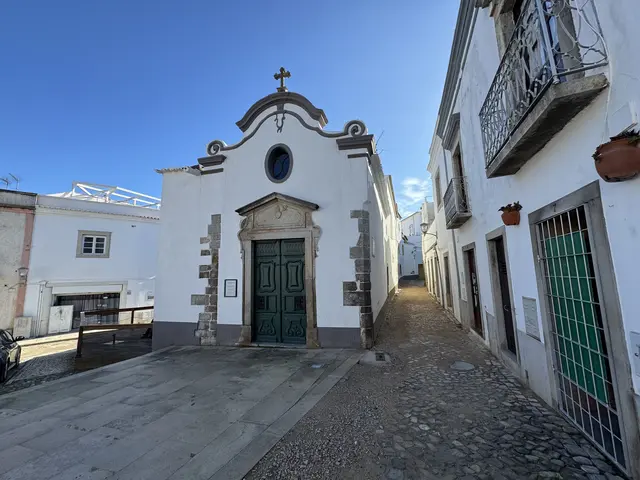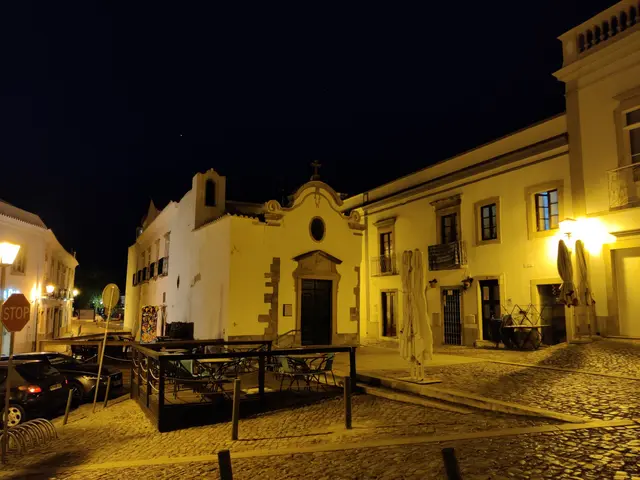Capela de Nossa Senhora da Piedade
Introduction
The Capela de Nossa Senhora da Piedade stands quietly in Tavira’s historic heart, offering a glimpse into Algarve’s rich spiritual traditions. This small 18th-century chapel, nestled by the old city walls and Gilão River, has witnessed centuries of devotion and community life. While modest in appearance, its Baroque details and cherished local legends make it a meaningful stop for cultural tourists, teachers, and anyone eager to explore Tavira’s layered past.
Historic Highlights
⛪ Capela de Nossa Senhora da Piedade: A Post-Quake Foundation
The Capela de Nossa Senhora da Piedade, a Baroque-style chapel in Tavira, was constructed in 1758. Built during post-earthquake recovery, it stands near the medieval town gate and castle walls. Its foundation reflected the community’s renewed faith after the devastating 1755 Lisbon quake. Local inhabitants, through a religious brotherhood, pooled resources to dedicate this space to Our Lady of Piety. The chapel’s origins speak to a spirit of gratitude and resilience—an enduring theme in Tavira’s story.
“Este templo de pequenas dimensões… foi construído em 1758, junto à muralha do castelo.”
— Guia de Igrejas, Ermidas e Capelas de Tavira
🎨 Baroque Details in a Humble Setting
Approaching the Capela de Nossa Senhora da Piedade, you’ll notice its curved Baroque fronton (pediment) and a single elliptical oculus above the doorway, which gently lights the interior. A sculpted relief of a flaming heart pierced by a dagger graces the entrance—a symbol of Mary’s sorrow and the core of the Pietà devotion. Inside, a richly gilded Rococo altarpiece frames a painting of the Virgin cradling Christ, creating a jewel-like focal point in an otherwise simple nave. The chapel’s architecture, though modest, borrows motifs from grander local churches, echoing Tavira’s wider artistic heritage.
“A decoração do tímpano é composta por trabalhos de massa… e um coração flamejante trespassado por uma espada.”
— DGPC Inventory
🕯️ Sanctuary for Community and Memory
The Capela de Nossa Senhora da Piedade has served as more than a chapel—it has anchored neighborhood identity and tradition for generations. In past centuries, local families gathered for prayers, feasts, and Holy Week rituals. Anecdotes include mothers leaving offerings for sick children, and stories of townsfolk sheltering sacred images within its walls during civil unrest. Older residents reminisce about ringing the little bell at dusk during Lent, or selling fish at a flea market in its shade—blending daily life with enduring faith.
💡 Visitor Tip
Time your walk in Tavira’s old quarter to seek out the Capela de Nossa Senhora da Piedade on heritage festival days, when doors are sometimes open to visitors. Step inside for a quiet moment and look up at the Rococo altar—it’s a hidden gem in the city’s “route of churches.”
Timeline & Context
Historical Timeline
- 1755 – Great Lisbon earthquake devastates southern Portugal, spurring rebuilding and religious renewal across the Algarve.
- 1758 – Capela de Nossa Senhora da Piedade constructed inside Tavira’s old city wall by a lay brotherhood, with no documented medieval predecessor.
- Late 18th c. – Rococo-style altarpiece and devotion to Our Lady of Piety established; local painters may have contributed artwork.
- 1880s–1900s – Minor expansions, including the north annex, likely made to accommodate evolving community needs.
- 1934 – Chapel’s care is transferred to the Committee of the Church of Santa Maria as confraternity wanes.
- 1980s – Renovation replaces wooden floor with tiles; a gravestone in front of the altar is removed and lost.
- 1983–2024 – Heritage classification efforts unfold with local and national authorities; in 2024, the process is advanced at the national level.
Origins in a Time of Renewal
The Capela de Nossa Senhora da Piedade’s birth in 1758 is best understood against the backdrop of the seismic upheaval of 1755, when the Lisbon earthquake encouraged cities like Tavira to express gratitude through devotion and reconstruction. Lacking direct evidence of a medieval precursor, the chapel’s existence reflects Enlightenment-era patterns in coastal Portugal—organized lay brotherhoods stepped up to bolster communal faith and rebuild sacred spaces where need and inspiration met.
Architectural Resonance and Vernacular Art
The chapel stands out as an interplay of Baroque artistry and Algarve vernacular, visible in its compact rectangular plan and modest scale. The elaborate Rococo altarpiece, wood-carved and gilded, evokes the opulence of bigger urban churches but was adapted here for a neighborhood sanctuary. By incorporating design cues from Tavira’s prominent monastic portals and relying on local painters, the chapel represents both aspiration and resourcefulness in religious architecture. Notably, the heart-and-dagger relief draws direct spiritual lineage from Marian iconography of sorrow, lending emotional immediacy to worshippers’ experience.
Socio-Cultural Anchoring
More than bricks and mortar, the Capela da Piedade has been a site of continuity for everyday Tavirenses—its stewardship passed from a lay confraternity to parish administration as social and religious tides shifted. Here, faith found expression in grassroots rituals: processions, acts of remembrance for the departed, and localized Holy Week observances. While not the focus of mass pilgrimage like Loulé’s famed Mãe Soberana, Tavira’s chapel provided personalized spiritual shelter—intimately entwined with the community’s rhythms, stories, and even folk legends warning that a flood breaching its door would signal the world’s end.
Heritage Preservation and Comparative Context
The fate of small monuments like the Capela de Nossa Senhora da Piedade mirrors the broader trajectory of Portugal’s cultural patrimony. In contrast to Loulé’s sanctuary (rebuilt and expanded as its fame grew) or the cliff-perched chapel in Porches (gravely threatened by erosion), Tavira’s chapel persists with little alteration—protected as much by relative obscurity as by community care. Delays and complexities in formal monument classification underscore the intricacies of safeguarding religious heritage, especially where ownership remains with the Church. Presently, state recognition is set to bring additional conservation resources, but the enduring threat is gradual decay—damp, salt, and the slow erosion of memory.
Legacy: Small Monuments, Big Meaning
The Capela de Nossa Senhora da Piedade is emblematic of the thousands of minor religious sites dotting Portugal, each with its own micro-history of devotion, artistry, and communal resilience. These chapels collectively illuminate how faith, art, and local initiative have continually shaped the Algarve’s—and the nation’s—cultural landscape. Their preservation is not merely about material survival, but about keeping alive the stories and traditions that anchor community identity through the centuries.


